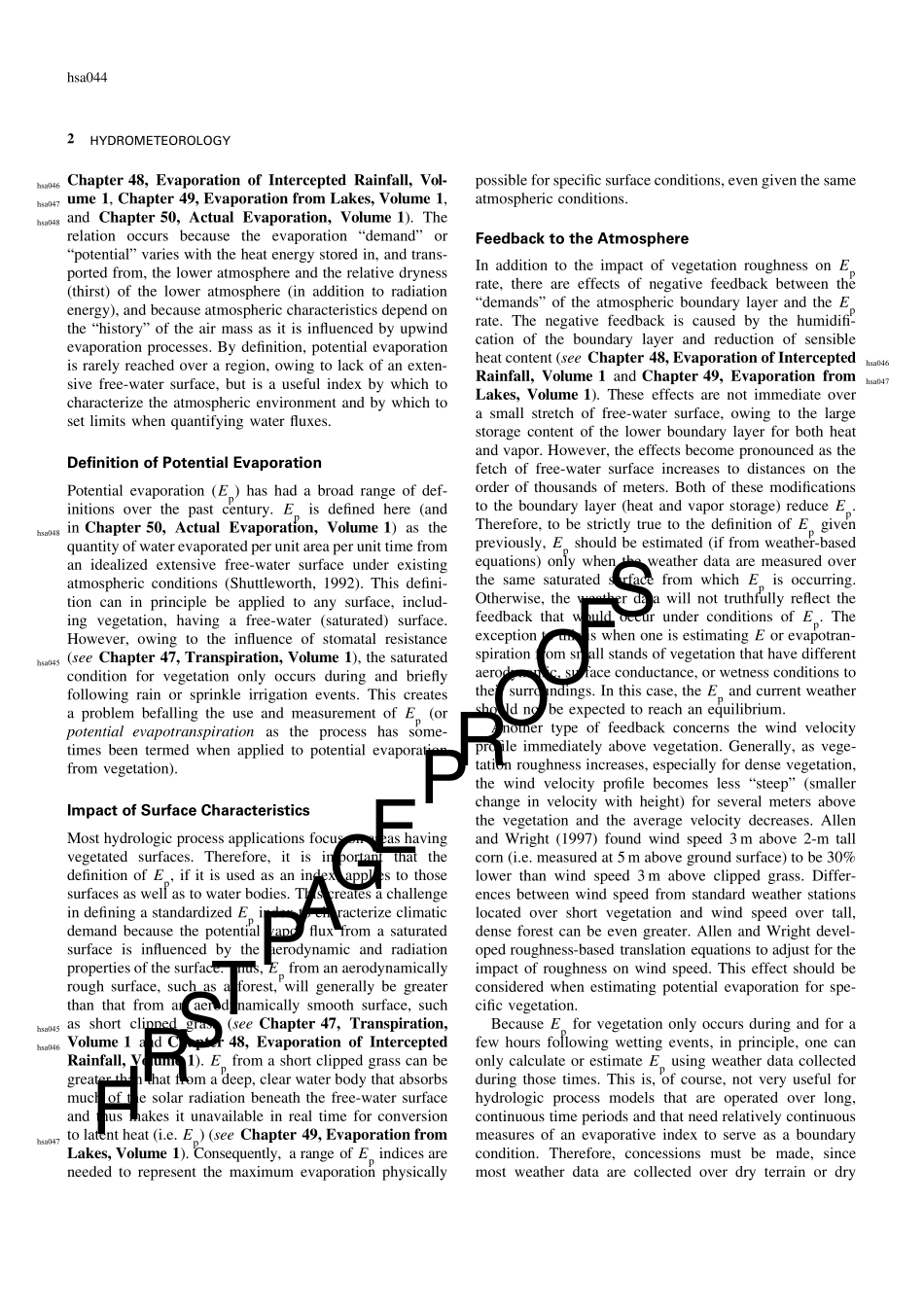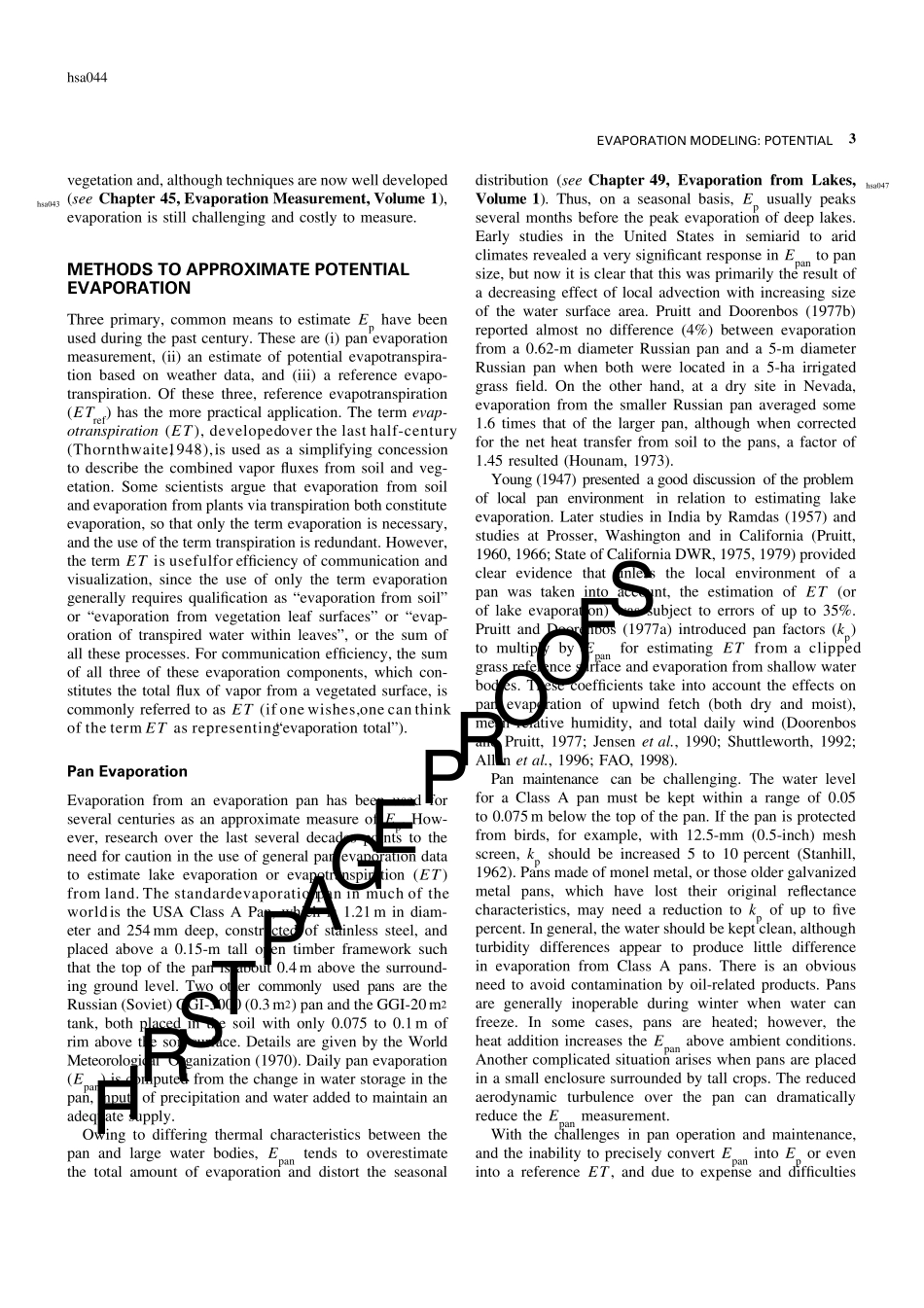FIRST PAGE PROOFShsa04446: Ev aporation Modeling: PotentialRICHARD G ALLEN• Univ ersity of Idaho, Kimberly , ID, USQ 1Potential evaporation (Ep) has had a relatively broad range of definition over the past century. It is defined hereas the quantity of water evaporated per unit area per unit time from an idealized extensive free-water surfaceunder existing atmospheric conditions. Three primary, common means to estimate Ep have been used duringthe past century. These are (i) pan evaporation measurement, (ii) an estimate of potential evapotranspirationbased on weather data, and (iii) a reference evapotranspiration. Of these three, reference evapotranspiration(ETref) has the more practical application. “Potential evapotranspiration” (ETp) had widespread usage fromthe 1940s through the 1970s, when the term was used to represent a maximum evaporative index from whichto derive estimates of actual ET from vegetation. However, there are several major, contrasting definitions forETp and severalchallengesassociatedwithits usage.One of the primarydefinitionsusedfor ETp is the rate ofevaporation and transpiration from a saturated (free-water) vegetated surface so that the evaporation processoccurs at the potential level. Challenges in sustaining a saturated surface and in measuring weather data thatare coincident with such a surface make this definition for ETp theoretically attractive, but practically difficult.Standardized parameterizations of the Penman–Monteith equation are described for calculating ET for grassand alfalfa references. The reference evapotranspiration, despite some shortcomings, can be a consistent andreproducible index for a weather-based potential evaporation.INTRODUCTIONEvaporation is the process whereby liquid water is co...


